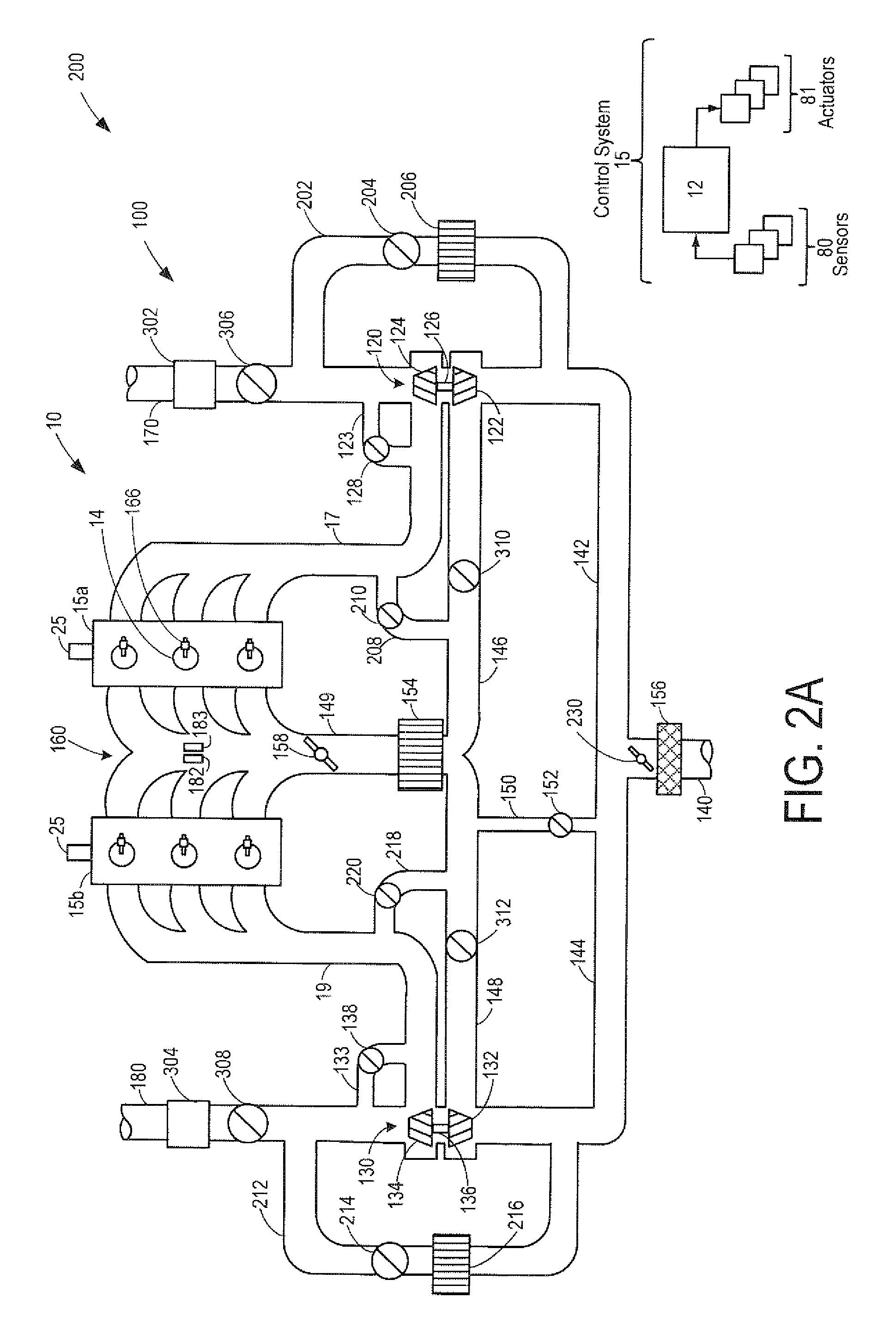Methods and Systems for Variable Displacement Engine Control
a variable displacement, engine technology, applied in the direction of electric control, machines/engines, mechanical equipment, etc., can solve the problems of high in-cylinder pressure, degrading engine components, undesired detonation of internal combustion engines, etc., to reduce the average noise level of knock sensor, detect more reliably, and increase threshold
- Summary
- Abstract
- Description
- Claims
- Application Information
AI Technical Summary
Benefits of technology
Problems solved by technology
Method used
Image
Examples
Embodiment Construction
[0016]The following description relates to systems and methods for adjusting cylinder operation in a boosted engine system (such as the VDE engine system of FIGS. 1-3). The engine system may switch between operation with all cylinders firing or fewer cylinders firing by selectively deactivating one or more cylinder fuel injectors. An engine controller may select a group of cylinders for deactivation based on a regeneration state of a downstream catalyst (FIGS. 4-5). Based on the selection, the position of one or more valves and throttles may be adjusted to maintain catalyst temperature, reduce back-flow through the disabled group of cylinders, improve boost operations, and coordinate EGR operations with VDE operations (FIGS. 6-7). The engine control system may also adjust each of a window and a threshold for knock and pre-ignition detection based on the deactivation (FIG. 8) to improve detection and mitigation of abnormal cylinder combustion events. In this way, by adjusting various...
PUM
 Login to View More
Login to View More Abstract
Description
Claims
Application Information
 Login to View More
Login to View More - R&D
- Intellectual Property
- Life Sciences
- Materials
- Tech Scout
- Unparalleled Data Quality
- Higher Quality Content
- 60% Fewer Hallucinations
Browse by: Latest US Patents, China's latest patents, Technical Efficacy Thesaurus, Application Domain, Technology Topic, Popular Technical Reports.
© 2025 PatSnap. All rights reserved.Legal|Privacy policy|Modern Slavery Act Transparency Statement|Sitemap|About US| Contact US: help@patsnap.com



